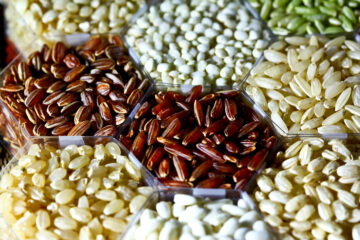Chicken meat is widely popular due to its affordability and versatility in cooking. It can be prepared in various ways, such as fried, barbecued, tandoori, or in soups, making it a favorite among people of all ages. Chicken is considered a lean source of protein with lower saturated fat compared to red meat. Additionally, chicken protein is rich in all essential amino acids, vitamins, and minerals, making it a valuable dietary component. It is one of the most consumed meats globally, without any significant cultural or religious restrictions.
Amino Acid Composition and Protein Quality
The nutritional value of food is greatly influenced by its amino acid composition. Chicken meat is considered high-quality protein because it contains all essential amino acids in balanced amounts. Notably, chicken meat contains the amino acid tryptophan, which influences brain cells by increasing serotonin hormone production. This hormone helps improve mood and reduce stress. The biological value of essential amino acids in chicken meat, when cooked, is 87.13, with a true digestibility of 81.43, and a net protein utilization of 70.95.
Bioactive Peptides in Chicken
Chicken meat contains bioactive peptides, which are short protein fragments that offer various health benefits. These peptides are produced through enzymatic hydrolysis and possess properties such as anti-hypertensive effects, opioid activities, immune-boosting functions, mineral-binding capabilities, antioxidant activities, and antimicrobial actions. This indicates that chicken could be considered a reliable functional food in the future.
Collagen and Hyaluronic Acid
Chicken legs are rich in proteins like collagen and hyaluronic acid, which have excellent biological functions such as enhancing cell proliferation, improving water retention, and maintaining moisture. These proteins are also used as anti-aging agents in skincare.
Health Benefits
Regular consumption of chicken meat can effectively prevent type 2 diabetes. Consuming chicken as part of a low-carbohydrate, high-protein diet over 5-6 months can lead to weight loss. This approach can increase satiety, resulting in reduced calorie intake and lower carbohydrate consumption during subsequent meals.
Compared to red meat, chicken is a healthier option due to its lower fat and cholesterol content. For instance, 100 grams of chicken breast meat contains only 3 grams of fat, whereas skinless red meat has an average of 5-7 grams. However, eating chicken with the skin doubles the fat and saturated fat content, so it’s advisable to cook chicken without the skin. As people look for ways to reduce fat in their diets, chicken consumption is on the rise.
Nutritional Composition
Chicken meat is low in saturated fatty acids and high in polyunsaturated fatty acids, making it a preferred meat choice. Chicken also provides essential polyunsaturated fatty acids like omega-3, with higher levels than those found in livestock. Unlike red meats like beef and lamb, chicken does not contain trans fats, which are associated with coronary heart disease.
Chicken meat also provides minerals and vitamins essential for brain function. The mineral content in chicken is less likely to affect meat’s taste, acidity, or the biological activity of various enzymes compared to red meat.
Chicken meat is rich in essential minerals like calcium, magnesium, phosphorus, and sodium. It contains about half the iron found in red meat, with a higher absorption rate of 15-20% compared to 1-10% from plant sources. Iron is crucial for hemoglobin production, preventing anemia, and supporting normal muscle function. Calcium and phosphorus are essential for bone formation and function.
The phosphorus in chicken meat helps maintain skeletal structure, central nervous system function, dental health, and metabolic processes. Magnesium contributes to protein synthesis and normal muscle function.
Vitamins in Chicken
Chicken meat contains selenium (8.6 to 41 µg/100 g), and consuming 55 µg daily supports metabolic rates, particularly thyroid hormone production, antioxidant defense systems, and immune function. Zinc is involved in various metabolic reactions, and a deficiency can weaken the immune system. Zinc, along with proteins, helps maintain overall health.
Among the vitamins, chicken meat is particularly rich in vitamin B3 (niacin), which is essential for carbohydrate metabolism and energy production. Niacin also prevents vision loss, skin disorders, and nervous system problems, and it plays a role in the synthesis of sex hormones. Chicken meat is also a good source of vitamin B1 (thiamine) and B2 (riboflavin), which are important for energy metabolism, and vitamin B12, which is crucial for nervous system function.
Conclusion
For low-income populations, incorporating chicken meat into their diets offers significant benefits. Its high digestibility makes it suitable for both children and adults. Compared to eggs, beef, and pork, chicken meat has lower fat and higher protein content, helping consumers maintain normal physiological functions and reducing the risk of non-communicable diseases like obesity, diabetes, and heart disease.
The proteins, vitamins, and minerals in chicken meat contribute to preventing aging, promoting muscle and bone growth, enhancing the immune system, and improving brain function. Therefore, chicken meat is considered an excellent choice for a healthy diet.
Mu. Muthulakshmi, Ra. Rajkumar, Pa. Nalini, Mu. Pradeep, Se. Divyapriya, Department of Livestock Products Technology, Veterinary College and Research Institute, Namakkal – 637 002.












